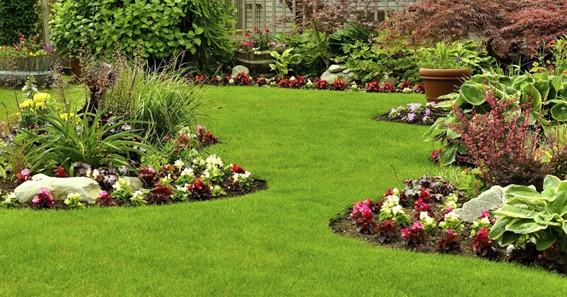Landscape architecture is the practice of planning and designing attractive outdoor environments by integrating aspects of nature and culture. Landscape architects accomplish this by adhering to seven guidelines that serve as the basis for their original designs. landscaping canton ga gives you a helpful information regarding seven principles of landscape design.
Each of these guidelines is essential in creating an effective composition that appeals to the eye and stimulates the senses. Landscape architects and designers who have a firm grasp on these concepts can use them to create stunning landscapes that serve a variety of purposes and draw people closer to nature.
- Unity:
The first principle of landscape design is unity, which means ensuring that the entire arrangement flows together smoothly. To achieve this, a uniform aesthetic is applied to the entire terrain. The design is cohesive and aesthetically beautiful because of the consistent use of color, texture and material. Maintaining cohesion helps the environment look less like a collection of disconnected parts and more like a whole.
- Balance:
Equal and opposite elements in the landscape should be preserved through the notion of balance. The goal is to generate a sense of solidity in the design by distributing visual weight evenly. Both symmetrical and asymmetrical balance is possible.
Balance can be achieved in two ways: symmetrically, when both sides of a landscape feature the same or nearly identical features, or asymmetrically, when two or more elements feature the same or similar visual impact. A well-balanced environment doesn’t feel off-kilter or overbearing, which is calming to the eye.
- Proportion:
The landscape’s proportions are how the landscape’s many features are sized in relation to one another or the surrounding area. It makes sure everything is in its place and has a nice aesthetic flow between its various parts. The landscape’s natural scale is preserved and features are not overpowered by improper proportioning. Large trees, for instance, need to be countered by smaller plants like shrubs and flowers.
- Rhythm:
Using rhythm in landscaping design, helps to convey motion and ease of sight. It’s the practice of strategically repeating aspects or patterns over the environment, such a walkway lined with trees or flower beds set at right angles to one another. Pavers and other hardscape elements can also be used to create a rhythmic effect. This cyclical pattern generates a sense of comforting sameness throughout the environment.
- Focalization:
The eye is drawn to and anchored by this focus of interest. It can be a fountain of water, a one-of-a-kind sculpture or a carefully manicured flower bed. Character and drama are added by focal points to the environment, making for a more memorable experience for the visitors.
- Contrast:
By highlighting differences between landscape features, contrast helps to provide visual interest and depth. This can be accomplished by using elements that are drastically different from one another.
Consider the contrast between a deep green lawn and brightly colorful flowers or between rough stone walls and polished water features. The overall look is improved by the use of contrast since it generates interest and makes specific features stand out.
- Simplicity:
The simplistic design philosophy is to keep the appearance neat and uncomplicated at all times. It involves making things as straightforward and uncluttered as possible so that they can be comprehended and traversed with ease. A simplistic design not only fosters an atmosphere of peace but also draws attention to the breathtaking beauty of the natural setting. The design remains uncluttered and aesthetically beautiful because to the inclusion of only the necessary components.
Click Here – What Is Human Poverty?






